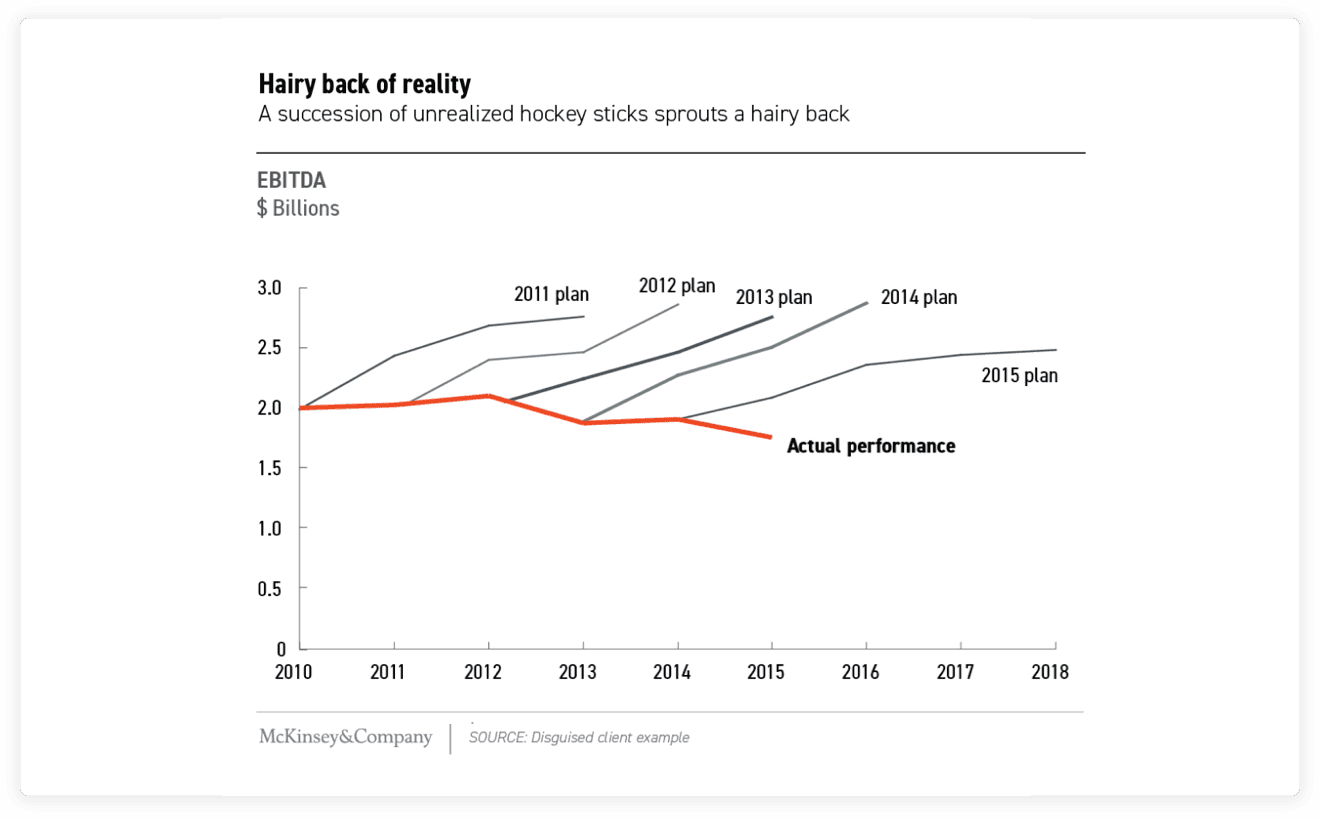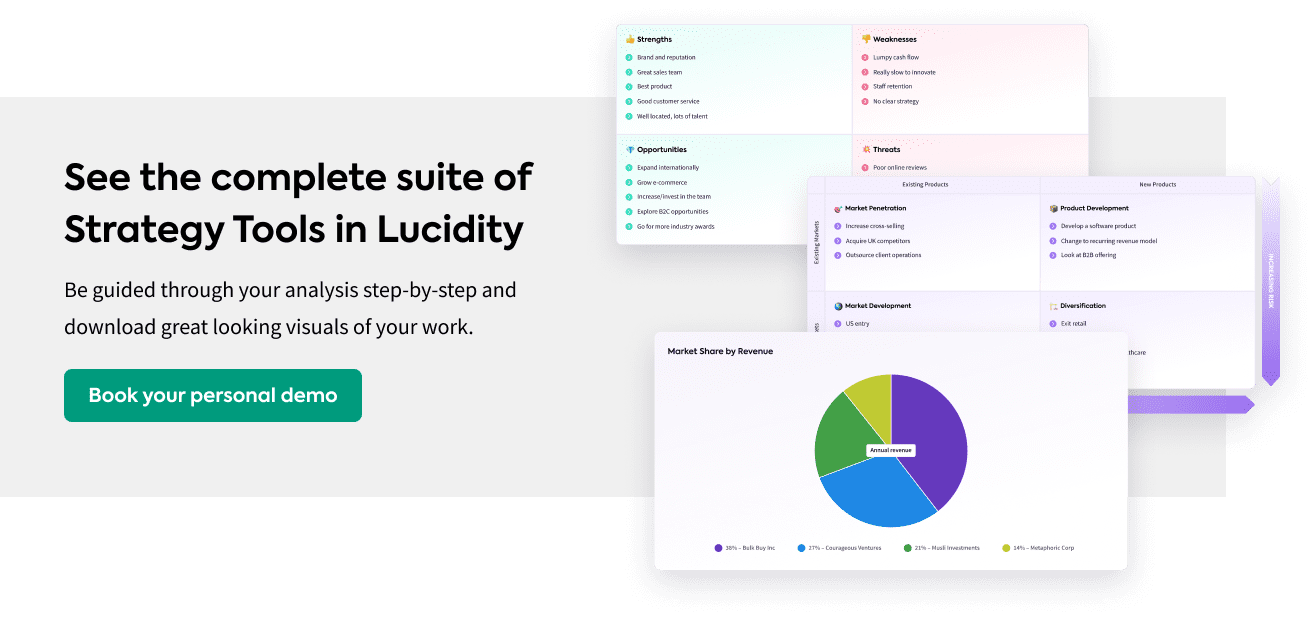Rather like fish, fruit & exercise, consuming strategy regularly is good for you!
Good practice is not the annual strategy offsite – best practice is regular, genuine discussion about your strategy and monitoring of your progress against the goals you have set yourselves and your organisation. You should be engaging in discussion about strategic progress on at least a quarterly basis and preferably monthly. Make the effort to create time in management schedules to do this. Industries and sectors with higher rates of change than average (e.g. technology vs. utilities) should recognise this.
However, there are teams, times and scenarios that really do need and justify an offsite strategy workshop. A new CEO? A longstanding CEO needing to drive change? A senior management team that has a lot of newcomers? Consistently poor results of any type? Significant client or competitive activity? Disruption in your sector?
Without doubt, getting the physical and mental space to focus can sometimes only be delivered by getting the team somewhere else – offsite. Particularly if you are formulating your strategy or changing it significantly, rather than monitoring progress. So here are some considerations and arguably best practice for strategy offsites.
Pre-reading
Team Dynamics – if you have in anyway a dysfunctional team – and for arguments sake please regard the team as the Founders, Board, Senior Managers, Managers – then you may need to take a slower run up to strategy work and try to iron out any team issues beforehand. A decent/fast read here is Five Dysfunctions of a Team by Patrick Lencioni, which steps you through the important issues of trust, conflict, commitment & accountability in teams and the combined impact of these on business results. You can read this in a day and perhaps you get a copy for everyone to set the tone for forthcoming team activities or to deal with specific issues that exist within the team. You should however, probably read it yourself first and have some sort of an idea of what the clean-up operation for any team issues is going to look like.
The Human/Social aspects of strategy – a great read is Strategy Beyond the Hockey Stick by some of the McKinsey strategists. We challenge anyone in management or senior management to read the Introduction and Chapter 1 first without recognising at least some of the issues and human behaviours highlighted. It’s brilliant, toe curling stuff. Prepare for flashbacks to strategy workshops you’ve been in over the years. And read the whole thing to consider how you should be approaching your strategic planning, to come out with an effective strategy that delivers the results you seek.
Homework
We always make all attendees, individually, complete a SWOT and PESTLE analysis before the offsite – like a week or two beforehand. These are simple but powerful tools that force each individual to think, reflect and consider what’s going on both within & around the business – and no one can be a passenger, everyone has to do it. Drop a template out to the team, ask for its completion and return. Of course, you get a lot (of useful) material back – a very effective warm up on the offsite day is for everyone to group and prioritise the individual content into common themes. It’s an effective start to the day.
Your Strategy History
There’s an uncomfortable but accurate descriptor of annual strategic plans – the Hairy Back. Those upward projections of improved results – from each year – that sprout from strategy offsites. Results that never quite happen. So let’s use this information to move forward & improve – take a look back at your company’s strategic planning history, all those projections that were produced and the reality that you actually saw. Then, take a deep breath and try to figure out why? Why didn’t those projections become true? This is tough as your list of considerations needs to start with:
i) Your leadership
ii) Your team’s leadership
iii) The behaviours – particularly around decision making – of everyone that came up with those plans
After you’ve considered those uncomfortable areas, then you can start getting into the more detailed debate around products/markets/competitor/hiring etc, that thwarted those plans & aspirations.
Tough stuff. But use those lessons to identify behaviours that need to change and decisions – or the way decisions were made – that should not be repeated. A difficult process, but very, very valuable. Be brave and be honest with each other.
The Strategy Team
It helps and is common sense to have involvement from different quarters of the business to get a more rounded view. Obviously, the senior management team; someone from the Board? What about other junior managers? How about someone from the sharp end of dealing with customers – sales and service? Someone with particular knowledge of the competitive environment? What’s going on outside the business is the important bit. So lastly, what about external contributors to get external perspective too – they don’t have to be there for the whole workshop, but they can bring fresh insight & energy into the room. It’s good to involve people as long as they are given guidance on how to contribute, confidentiality, etc. They also provide a bit of a litmus test as to how open or closed you are to new ideas.
After formulating a strategy, success comes from communicating it and getting everyone aligned. Having people from different areas and layers of the business who have contributed to the strategy in the first place can go a long way in getting it successfully communicated, understood and supported across the business.
Offsite Duration
Don’t do two days in a row. Do one day, take a week, then have Day 2. Let’s be honest there are a couple of good reasons for this. A) If you want to stay for dinner at the end of the first day relaxing, reflecting, team bonding – great. But don’t expect to have sharp minds the next day after a latish night, alcohol and a poor night’s hotel sleep. B) everyone needs a chance to reflect, to percolate the discussions and ideas from Day 1. Arriving for Day 2 physically and mentally refreshed a week later with some clarity of thought & perspective would seem sensible when making decisions on arguably the most important aspects of your business.
Workshop Frequency
Annual strategy reviews are a thing of the past. If you can get the team offsite then try to make it quarterly (one day a quarter isn’t much to aim for). Try also to create the space for strategy within monthly management meetings. We appreciate for international teams this can be tricky & tiring for the lone transatlantic manager – there are some decent, low cost video conferencing services out there now (eg appear.in as one good, low cost newcomer) that mean there’s no real excuse anymore to not manage around this & include the right people in an effective way.
Facilities & Facilitator
Boring but important!! So you have an expensive bunch of people somewhere for a couple of days & want them to be comfortable, enjoy themselves and provide some critical output for your business. So PLEASE spend a bit of time getting a room with enough space, a screen (if you are powerpointing) people can see, a projector that doesn’t cook & deafen everyone. In-room technology is much better these days, but make sure someone does some room check & prep to support success. Attention to detail and all that.
And a facilitator? Absolutely. Keep things on track & on time. Ensure everyone contributes. Challenges people at the right time, in the right way. Keep the conversation flowing. Another perspective. A deeper knowledge of strategy and tools. Help with the admin follow up. Post-event feedback. How about you do a quick cost:benefit analysis to compare a bit of date rate cost for a facilitator against a successful strategy, your business thriving and a happy team. Mmmm.
Format
Strategy formulation is (unfortunately) a huge subject covered in other content pieces from us. But let’s cover off a couple of really, really key points on the format of the day.
You are in the offsite to take the time to discuss strategic alternatives. Let’s agree on that point. So therefore:
A) Sitting looking at 4000 Powerpoint slides isn’t having a discussion
B) There shouldn’t be a pre-decided plan that someone is trying to get everyone else to agree to. That’s not considering strategic alternatives.
So perhaps Day 1 is exploring alternatives – genuine alternative options or choices. Strategy is about choosing where to focus and choosing what to do. So surely a strategy offsite should be identifying what those choices are? Right? So, structure an approach and an agenda that allows choices to be surfaced and discussed properly.
Then perhaps Day 2 is about making decisions. And during that preceding week the team have had a chance to reflect, consider and digest those alternative choices do some research, get some data. Perhaps Day 2 is when you get input and opinion from everyone and discuss some facts and figures that will help you make good decisions as a team.
Lastly – physical format – being tied to a chair all day isn’t much fun. Facing people across tables can create conflict when conversation is what’s important. So break it up – go for a walk – and we mean a proper, long walk. When you go for a walk everyone is pointing in the same direction. That’s a good start.













